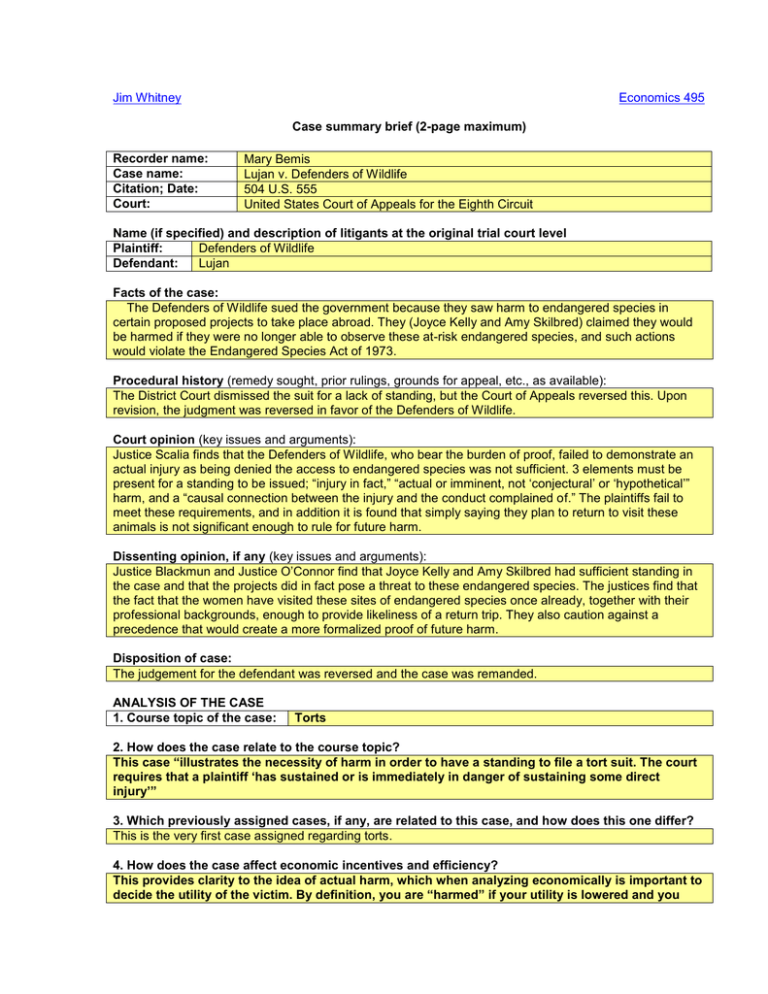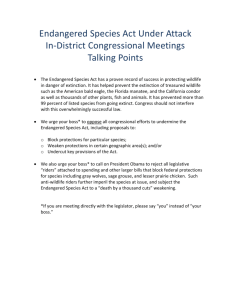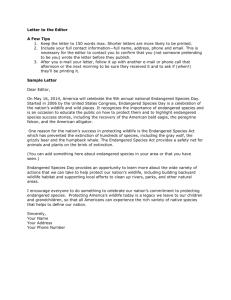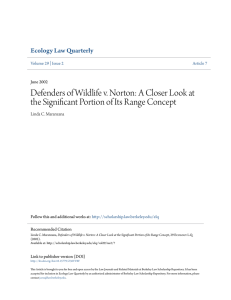Jim Whitney
advertisement

Jim Whitney Economics 495 Case summary brief (2-page maximum) Recorder name: Case name: Citation; Date: Court: Mary Bemis Lujan v. Defenders of Wildlife 504 U.S. 555 United States Court of Appeals for the Eighth Circuit Name (if specified) and description of litigants at the original trial court level Plaintiff: Defenders of Wildlife Defendant: Lujan Facts of the case: The Defenders of Wildlife sued the government because they saw harm to endangered species in certain proposed projects to take place abroad. They (Joyce Kelly and Amy Skilbred) claimed they would be harmed if they were no longer able to observe these at-risk endangered species, and such actions would violate the Endangered Species Act of 1973. Procedural history (remedy sought, prior rulings, grounds for appeal, etc., as available): The District Court dismissed the suit for a lack of standing, but the Court of Appeals reversed this. Upon revision, the judgment was reversed in favor of the Defenders of Wildlife. Court opinion (key issues and arguments): Justice Scalia finds that the Defenders of Wildlife, who bear the burden of proof, failed to demonstrate an actual injury as being denied the access to endangered species was not sufficient. 3 elements must be present for a standing to be issued; “injury in fact,” “actual or imminent, not ‘conjectural’ or ‘hypothetical’” harm, and a “causal connection between the injury and the conduct complained of.” The plaintiffs fail to meet these requirements, and in addition it is found that simply saying they plan to return to visit these animals is not significant enough to rule for future harm. Dissenting opinion, if any (key issues and arguments): Justice Blackmun and Justice O’Connor find that Joyce Kelly and Amy Skilbred had sufficient standing in the case and that the projects did in fact pose a threat to these endangered species. The justices find that the fact that the women have visited these sites of endangered species once already, together with their professional backgrounds, enough to provide likeliness of a return trip. They also caution against a precedence that would create a more formalized proof of future harm. Disposition of case: The judgement for the defendant was reversed and the case was remanded. ANALYSIS OF THE CASE 1. Course topic of the case: Torts 2. How does the case relate to the course topic? This case “illustrates the necessity of harm in order to have a standing to file a tort suit. The court requires that a plaintiff ‘has sustained or is immediately in danger of sustaining some direct injury’” 3. Which previously assigned cases, if any, are related to this case, and how does this one differ? This is the very first case assigned regarding torts. 4. How does the case affect economic incentives and efficiency? This provides clarity to the idea of actual harm, which when analyzing economically is important to decide the utility of the victim. By definition, you are “harmed” if your utility is lowered and you move to a lower indifference curve. The goal of the court is to minimize this effect.









